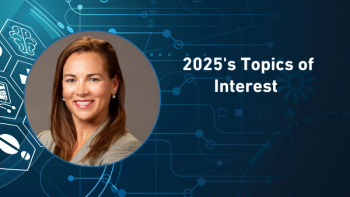
Overcoming Legacy Systems
In the fourth part of his Pharma Commerce video interview, Scott Tillman, Logility’s senior vice president of innovation, explains how migrating to cloud-based systems can help overcome this challenge.
In a video interview with Pharma Commerce, Scott Tillman, Logility’s senior vice president of innovation, addresses the gap between high interest in generative AI (GenAI) and its relatively low adoption in supply chain-specific applications, as highlighted in Logility’s Supply Chain Horizons 2025 Market Report. He identified several key reasons for this disconnect.
First, many companies experience “paralysis by analysis” due to the rapidly evolving technology landscape. With so many options and an unclear starting point, organizations often hesitate to act. Tillman emphasized the importance of adopting an agile, iterative approach—developing, deploying, learning, and refining continuously—rather than seeking a perfect solution from the outset.
Second, he pointed out a cultural shift that needs to happen within organizations. Companies must become more comfortable with experimentation in software implementation, viewing it as a learning process rather than a one-time deployment. This mindset change is essential for successfully leveraging emerging technologies like GenAI.
Financial and technical barriers also play a role. Expertise in GenAI is both scarce and costly, and training models can be time-consuming. Organizations face a strategic decision: whether to build their own AI models or depend on third-party software vendors. Tillman noted that this debate is still in its early stages, and its outcome will shape how companies integrate GenAI into their operations.
Finally, he stressed that in the supply chain space, companies will increasingly depend on vendors like Logility to provide specialized expertise and value-driven use cases. These could include demand sensing, forecasting insights, and other prescriptive applications of GenAI tailored to business needs. Overall, Tillman advocated for a practical, phased approach to GenAI adoption, focusing on clear, impactful use cases rather than waiting for the perfect solution.
He also comments on some common misconceptions supply chain leaders might have about what it means to be “digitally optimized;” the role of automation and GenAI evolving in workforce development; how geopolitical or economic volatility can potentially reshape the way organizations prioritize supply chain investments; and much more.
A transcript of his conversation with PC can be found below.
PC: Legacy systems remain a significant barrier, yet many organizations hesitate to migrate to cloud-based solutions. What do you think holds them back—and what can shift that mindset?
Tillman: There’s the innovators curve, where you have your early adopters, and then you have your laggards. As part of that process, the early adopters embrace the cloud, more so from a cost perspective. There was a cost aspect that was being sold, as moving to the cloud, you don't need as many IT resources. I think that has started to shift where when you look at AI and GenAI, there are incentives to be innovative around the cloud as well.
I think that is going to start [encouraging] those laggards to move forward to the cloud. I do think there are some concerns around sunk cost—clients have invested a ton in their legacy systems over the years. They're wondering if they've gotten the total value of that and what the value is in moving to the cloud. There's always an ROI type of analysis that is done, whether or not it is worth moving to the cloud. I do think the incentive to innovate is going to move more people towards the cloud, especially when it comes to AI and the data that is required to feed AI. That data is going to be larger than, potentially just your organization.
There’s a concern about security, but you're going to need data beyond that to drive that. That big data is not necessarily something that companies can invest in and invest in a way in which that infrastructure is available to them easily, without a large upfront cost.
I think the other portion is security. We hear about security breaches, whether it be Oracle Cloud, whether it be O-9, some of the things that have happened along those lines. There is concern around security. I think as we move forward, those concerns are going to be addressed, but companies are very mindful of the fact they're one potential breach away from destroying their brand, so the incentive to be there and to be secure is definitely heavily focused on the provider side.
Newsletter
Stay ahead in the life sciences industry with Pharmaceutical Commerce, the latest news, trends, and strategies in drug distribution, commercialization, and market access.





